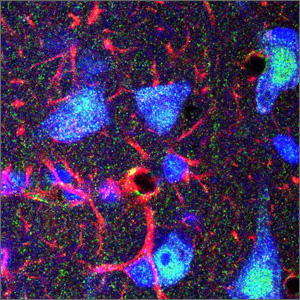Contact
Positions
Professor Emeritus
- Organization:
- West Virginia University School of Medicine
- Department:
- Pathology, Anatomy and Laboratory Medicine
- Classification:
- Faculty
Professor
- Organization:
- West Virginia University School of Medicine
- Department:
- Rockefeller Neuroscience Institute (SOM)
- Classification:
- Faculty
Education
- PhD, Michigan State University
Publications
Selected Publications:
- A.K. Salm, B.E. Lally, E. Borysiewicza, D. Fil and G. Konat (2015) Analysis of extinction acquisition to attenuated tones in prenatally stressed and non-stressed offspring following auditory fear conditioning. Physiol. and Behav.. 139 (16): 157-166.
- A.K. Salm and J.L. Culberson (2015) Peer presentations of case studies. Medical Science Educator. 25 (4): 407–412.
- Bruner NR, Salm AK, Anderson KG. Effects of prenatal stress on lever-press acquisition with delayed reinforcement in male and female rats Behav Processes (2012 Mar) 89(3): 256-63.
- Konat GW, Lally BE, Toth AA, Salm AK. Peripheral immune challenge with viral mimic during early postnatal period robustly enhances anxiety-like behavior in young adult rats. Metab Brain Dis (2011 Sep) 26(3): 237-40.
- Kaur G, Salm AK. Blunted amygdalar anti-inflammatory cytokine effector response to postnatal stress in prenatally stressed rats. Brain Research (2008), 1196:1-12.
Link to PubMed for full list of publications: https://www.ncbi.nlm.nih.gov/pubmed/?term=AK+Salm
Research Interests
My laboratory currently has two major foci. The first is plasticity in the amygdala the part of the brain that controls fear. We are interested in the amygdala's potential role in the etiology of mental health conditions brought about or exacerbated by stress including post traumatic stress disorder, generalized anxiety disorder and social anxiety disorder. So far we have examined behavioral, biochemical and structural changes in the brains of adult rats whose mothers were subjected to mild stress during pregnancy. Similar to humans with histories of childhood trauma, these animals are behaviorally hyperresponsive to stress and have altered brain biochemistry. We have now also shown an enlargement in the lateral subnucleus of the amygdala. Our recent developmental studies further indicate that these alterations in behavior and structure are detectable early in development. Experiments currently underway also implicate activation of DNA binding Smad proteins in the amygdala's response to stress (picture). We now plan to use a variety of approaches including light microscopic level stereology, multiprobe fluorescence histochemistry, behavioral assessments, tract tracing techniques and physiological approaches to further explore how prenatal stress alters the brain circuits governing fear and anxiety.
A second long time interest has been the contribution to brain plasticity of a major class of glial cell, the astrocyte. The physical presence of astrocytes in the CNS serves to regulate communication amongst specific sets of neurons by modulating synaptic contacts, and through the establishment and maintenance of neuronal subgroupings. Astrocytes do this by undergoing structural plasticity, i.e., actively rearranging their processes to selectively segregate neuronal elements. Recently we have extended our study of glial cells to include microglia and evaluating the role of glia in events surrounding prenatal stress in the amygdala.

Triple label histo and immunofluorescence for glial fibrillary acidic protein (astrocytes:red), Smad protein (green) and Nissl substance (blue) showing Smad proteins in neurons and astrocytes. When activated by stimulation of the TGFb family of receptors, Smad proteins become activated, translocate to the nucleus and bind to DNA to cause a variety of cellular responses (Dou et al., 2000, Mol. Cell. Biol., 20:6201).
Our laboratory studies the effects of adverse early life experiences on the development of the brain and how these contribute to pathological anxiety. Anxiety disorders affect over 19 million Americans. In addition to the emotional toll, dollar costs to the U.S. economy in lost productivity are estimated to be in the tens of billions per year. Additionally, individuals suffering from anxiety experience increased health care costs resulting from a long list of diseases that are stress-associated. Individuals with untreated anxiety, and their families, experience the effects of a range of dysfunctional behaviors including alcohol and drug abuse, child and spousal abuse, early out-of-wedlock pregnancies, and contact with the social welfare and criminal justice systems. In all, these disorders exact a heavy toll on our nation's human and financial resources.
Our research is focused on the circuitry of the brain that is responsible for generating the emotion of fear. The emotion of fear is adaptive - it was useful in helping our ancestors avoid the occasional saber toothed tiger and live to reproduce. But when this adaptive circuitry is overstimulated early in life, it sets modern day individuals up to be overly anxious and, in many cases, depressed as well.
To study the development of these "anxious" brain circuits, we use rats whose mothers were mildly stressed in the last third of their pregnancies. These "prenatally stressed" rats have many of the same characteristics as anxious humans. They are more fearful and their stress hormones' levels tend to be elevated for longer periods following exposure to stressful situations.
The techniques we use to study these animals include anatomical, biochemical and behavioral assessments. Specifically these are immunocytochemistry, light microscopic stereology, electron microscopy, in situ hybridization, defensive withdrawal/open field behavioral measures.
The video clips show two rats being tested in the defensive withdrawal/open field test. Rats are naturally inclined to seek darker "safe" places. On the other hand they are also inclined to explore open places to find food and mates. The amount of time it takes a rat to come out of the safe enclosed chamber into the open field is an "operational definition" of relative anxiety levels. Rats who are more fearful take longer to come out. Can you guess which of these rats was prenatally stressed?